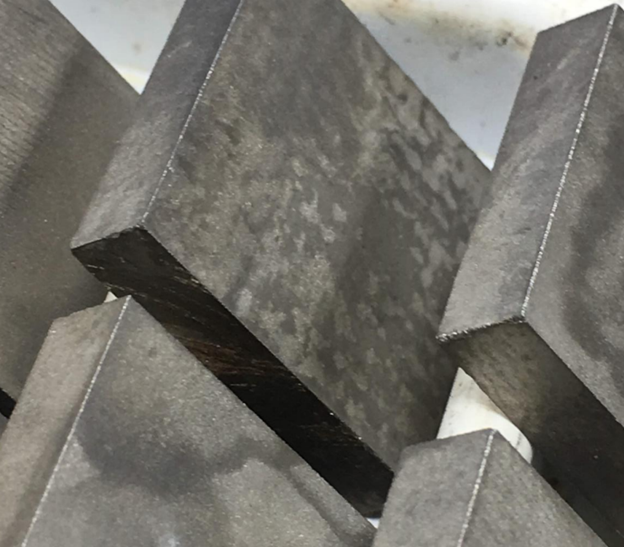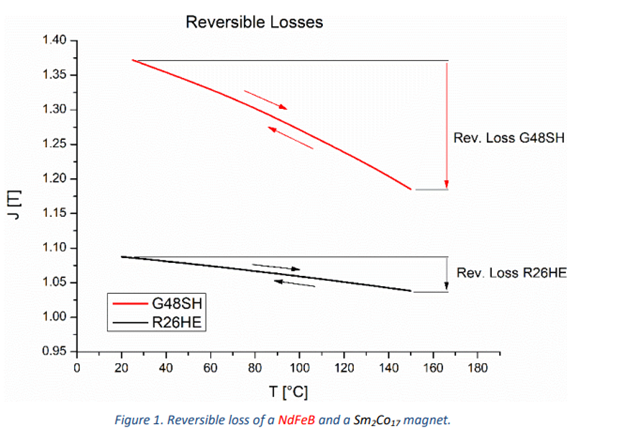
This White Paper from Arnold Magnetics describes the magnetization losses that are possible in SmCo and NdFeB permanent magnet materials. Reversible losses are first discussed followed by irreversible losses, which can be caused by temperature, external fields or radiation. Losses over time by magnetic viscosity are also discussed. Finally, permanent losses caused by corrosion, hydrogen, high temperatures and radiation are considered.
Excerpt:
1 Introduction
When permanent magnets are used in any application, it is important to consider also the long-term behavior of the magnets. The choice of the magnet grade and design depends on the expected losses and required long-timestability. When magnets are used in too difficult magnetic environment, irreversible losses may occur. And if the magnet is used in challenging atmospheric conditions there might be a risk of permanent losses due to corrosion.
2 Reversible Losses
The reversible loss of a magnet is the change of the magnetization of a magnet with changing temperature, if themagnetization completely returns to the original magnetization after returning to the original temperature. The reversible loss can be characterized by the reversible temperature coefficient (RTC). In a closed circuit, a standard Sm2Co17 magnet has between room temperature and 200°C a reversible temperature coefficient of about -350ppm/K (-194ppm/F). SmCo5 has a RTC(Br) of about -450ppm/K and NdFeB has a RTC(Br) from 950 to 1250ppm/K. These values can change in an open circuit, especially for Sm2Co17 magnets. As can be seen in the following diagram the changes of the polarization with temperature are not perfectly linear but slightly parabolic.

Download the full white paper here: https://www.arnoldmagnetics.com/blog/magnetization-losses-white-paper/
For more news and information, see: https://www.arnoldmagnetics.com/resources/blog/



